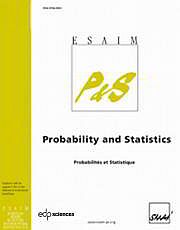No CrossRef data available.
Article contents
Random thresholds for linear model selection
Published online by Cambridge University Press: 23 January 2008
Abstract
A method is introduced to select the significant or non null mean terms among a collection of independent random variables. As an application we consider the problem of recovering thesignificant coefficients in non ordered model selection. The method is based on a convenient random centering ofthe partial sums of the ordered observations. Based onL-statistics methods we show consistency of the proposedestimator.An extension to unknown parametric distributions is considered. Simulatedexamples are included to show the accuracy of the estimator.An example of signal denoising with wavelet thresholding is also discussed.
- Type
- Research Article
- Information
- Copyright
- © EDP Sciences, SMAI, 2008


